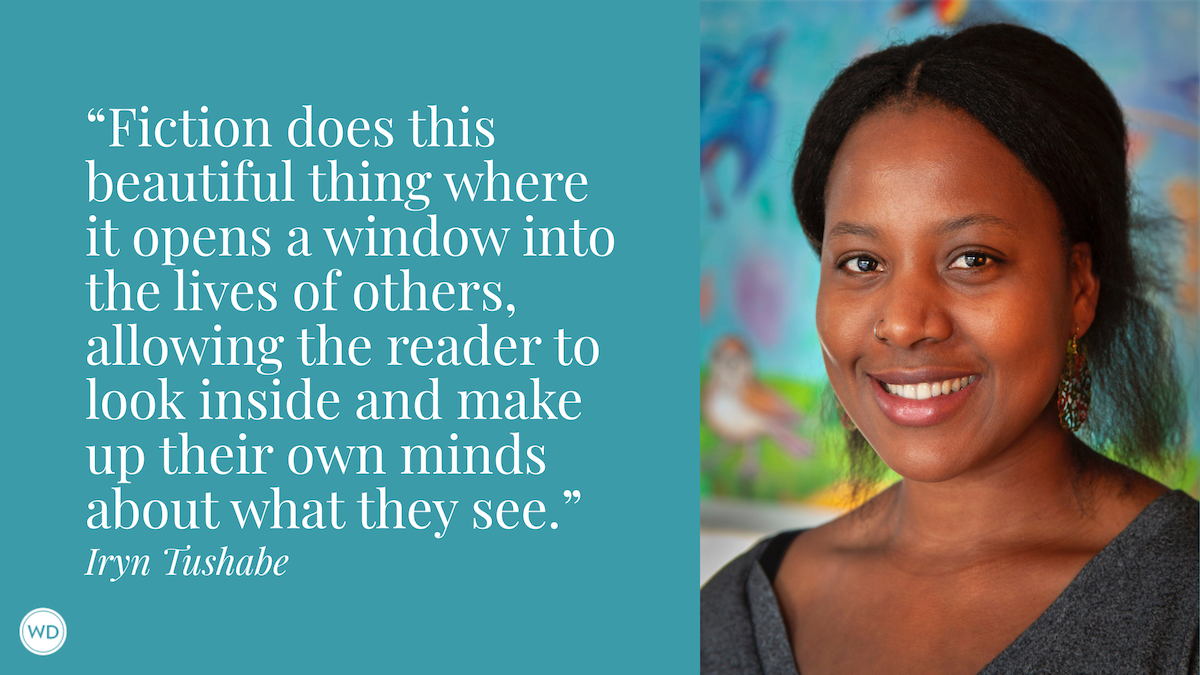Making Magic, Part 1: Defining and Selecting Magic Systems
In the first of a two-part series, WD editor Moriah Richard explains how magic systems exist on a spectrum and gives you some tips on selecting a system that works for you.
John Campbell, American science fiction writer and editor of Analog Science Fiction and Fact, is famously quoted as having said this:
“The major distinction between fantasy and science fiction is, simply, that science fiction uses one, or a very, very few new postulates, and develops the rigidly consistent logical consequences of these limited postulates. Fantasy makes its rules as it goes along … The basic nature of fantasy is “The only rule is, make up a new rule any time you need one!’”
Though I respect Mr. Campbell very much, on this issue, I will have to disagree. I think that speculative fiction has branched out in new and interesting ways, and in turn, we see that fantasy no longer holds strictly to a nebulous magic structure. Not all readers are satisfied by the “And then the wizard saved the day!” plot point. Some want to understand the magic. They want to know its boundaries, see its limitations, and be able to anticipate the main character’s struggle.
This brings us to you, a writer who knows (or is at least playing around with the idea) of writing a book that involves magic. Knowing this, there are two questions you’ll need to answer before you dive into this aspect of world-building:
- What types of magic systems are there?
- What type of system is best for my story?
By the end of this article, I hope that you’ll be able to answer these questions for yourself.
The Magical Spectrum
Most writers believe that today’s magic systems exist on a spectrum. This spectrum was popularized by fantasy writer Brandon Sanderson in a series of articles he first posted to his website in 2007.
Sanderson believes that most fantasy can be placed along a spectrum where there are three main points: soft magic at one end, hard magic at the other, and a middle ground between the two.
Soft magic, he explains, is magic that is not well-defined for the reader. Generally, we don’t understand where the magic comes from, who can use it, or what its limitations are. Because of this, a lot of writers will argue that The Lord of the Rings series exists on this end of the spectrum; Gandalf comes back to life simply because he is a wizard. Readers can see this type of magic being used, but they can never anticipate when magic will be used in the plot because they can’t begin to guess how it works. You can’t break a rule if the rules don’t exist! Most stories that feature soft magic systems will have the magic users be secondary characters, allowing them to avoid explaining exactly how the magic works. It’s also argued that without knowing everything about the magic, it tends to hold more wonder and excitement for readers.
Other examples: Game of Thrones series by George R.R. Martin, American Gods by Neil Gaiman, and The Dark Tower series by Stephen King.
Hard magic, on the other hand, has very rigid boundaries. Sanderson explains that with hard magic systems, readers know where the magic comes from, how it’s used, who uses it, and what its boundaries and limitations are. Fantasy-based games like D&D and World of Warcraft are perfect examples of this, and a lot of writers use them as inspiration for creating hard magic systems of their own. Some popular examples of this system are the Fullmetal Alchemist and Avatar: The Last Airbender television shows. In those series, we know the limitations of the characters and can understand why they can’t simply magic themselves out of any particular challenge. Stories with hard magic systems do not need to avoid the main character being a magic-wielder, as they have the capacity to explain to the reader what is going on. A lot of writers like hard magic systems because it gives them very explicit guidelines to follow in their plot and creates some more satisfying pay-offs for readers.
Other examples: Circe by Madeline Miller and anything written by Brandon Sanderson.
The middle ground is, of course, the meeting point between the soft and hard systems. We might understand a bit about the way the magic works, but not all our questions are answered. The most famous of this system is most likely the Harry Potter series. While most of the content adheres to rules (Lumos creates light at the tip of a wand; Obliviate will make you forget things; you only have so much time after taking Polyjuice to appear as that person), these rules aren’t fully explored. The one that always drove me crazy was, in my opinion, the biggest: Lily’s protective spell that saved Harry’s life. Was she really the only mother in the history of the Harry Potter universe ever to do that? But when it comes down to it, we don’t need that question to be answered to follow Harry’s story. Middle ground magic systems rely on the reader’s suspension of disbelief. In this type of system, the main character can be a magic-wielder or not, and it’s up to the writer to determine when magic will be used in terms of plot.
Other examples: The Dreamer Trilogy by Maggie Stiefvater, The Six of Crows series by Leigh Bardugo, and The Umbrella Academy series by Gerard Way and Gabriel Bá.
Selecting a Style
Now that you can see the spectrum of magic systems, it’s time to figure out where your system will fall. To help you do this, I recommend asking yourself three questions:
1. Is your magic a stand-in for something else?
I’ve seen it argued that the Star Wars series is a hard magic system; you could also argue that it lands on the soft side of the spectrum. When I watch the films (especially the sequel trilogy), I don’t really understand how The Force works, but I can easily pick out that it can be a metaphor for a religious experience. By aligning with The Force, people are able to experience a one-ness that many people in our world report after a spiritual transformation. Because I see it this way, I don’t need the magic to be fully explained to me.
In my thesis for my MFA, I wrote a novella about people who were born with special powers. In that universe, the magic was used as a metaphor to explore various forms of otherness and feelings of alienation. For one character, the magic stood for queerness; for another, it was an exploration of the emotional effects of depression. Having a soft magic system allowed me to explore those concepts without getting off-track talking about the mechanics of the magic.
If you’re using your magic as a way to explore a metaphor for something else, a soft or middle ground magic system will probably be the best way to flesh it out. In a hard magic system, knowing exactly how everything works will confine the reader’s imagination. No longer will they be able to explore what exactly the magic could mean within the narrative; it becomes a tool your characters use like a car or a sword.
(YA Author Cassandra Clare Reveals the Practical Magic Behind Her Bestselling 'Shadowhunter' Series)
2. Is your magic central to the conflict of the plot?
In Whitney Hill’s Shadows of Otherside series, Arden is an elemental, meaning, in this case, a magic-user whose source comes from an element. However, elves have a bounty on elementals, forcing her to live a life of secrecy and fear. The central plot of the first novel, Elemental, revolves around an elf hiring Arden as a private investigator without realizing that she’s a magic-user. This forces her down a narrow path of conspiracy, deception, and danger. Here, the magic is not a stand-in for something else, but without it, there would be no plot. Because of this, Arden needs to be able to explain to the reader exactly how magic works and how to wield it; otherwise, we would never understand the stakes of the story.
If your magic isn’t a stand-in for something else and your conflict depends on it, it’s probably best to go with either a middle ground or a hard magic system. The reader needs to be grounded enough in the magic to understand why characters are forced to make the choices they do and to see how that brings them closer to or further from the desired outcome.
3. How will the magic interact with your story’s theme?
This is probably the one you’ll sit with the most. To really understand what kind of magic you’ll need, you have to know how it will help you tell your story in the best possible way. When you think about your story’s theme, what kind of magic will you need to help you make that clear to the reader?
When I think about Victor LaValle’s The Changeling, I’d argue that LaValle uses a middle ground magic system as a tool to explore themes of family secrets and fatherhood. We learn a bit about where the magic comes from and who can use it and how they use it, but not everything is tied up in a neat bow by the end. Instead, the novel focuses on the narrator, Apollo’s, journey as he navigates these themes. If the magic were explained more in-depth, we’d lose the thread of Apollo’s journey. If LaValle explained less about the magic, Apollo wouldn’t be able to know how to reach his goal of reuniting his family. Instead, LaValle has worked to create a balance between what his character needs to know to service the plot without spending too much time crafting work that doesn’t align with the story’s themes.
It’s important to note here that there aren’t any true hard-and-fast rules to using magic in your story. In fact, although I used The Lord of the Rings series as an example of soft magic, some writers argue in the opposite direction; because of the information laid out in Tolkien's The Silmarillion, many argue that it’s a hard magic system across all his books. That’s the beauty of writing! However, I hope that this has given you a better understanding of the ideas writers are already working with and steered you toward a clearer understanding of what magic system will work best for your story.
In Part 2, I’ll be looking more closely at the construction of magic systems, including magical sources, wielders, limitations, and more!
Since obtaining her MFA in fiction, Moriah Richard has worked with over 100 authors to help them achieve their publication dreams. As the managing editor of Writer’s Digest magazine, she spearheads the world-building column Building Better Worlds, a 2023 Eddie & Ozzie Award winner. She also runs the Flash Fiction February Challenge on the WD blog, encouraging writers to pen one microstory a day over the course of the month and share their work with other participants. As a reader, Moriah is most interested in horror, fantasy, and romance, although she will read just about anything with a great hook.
Learn more about Moriah on her personal website.








